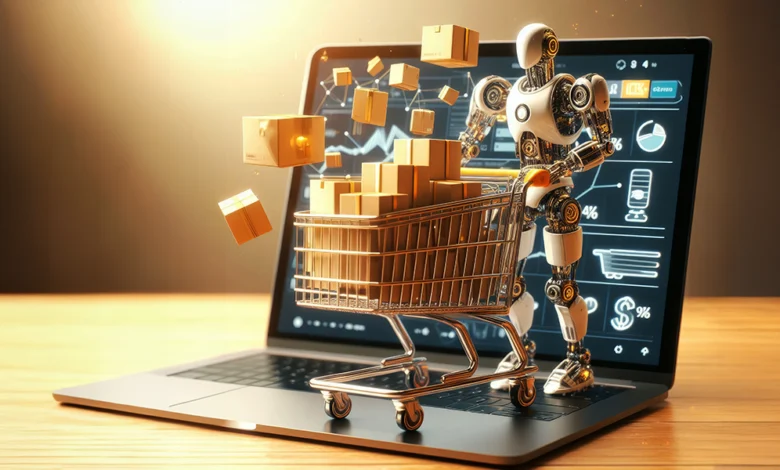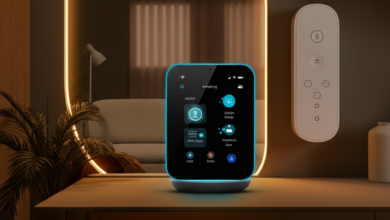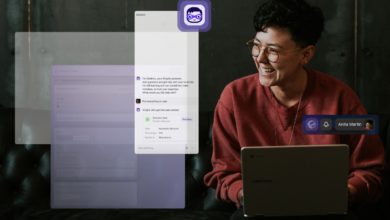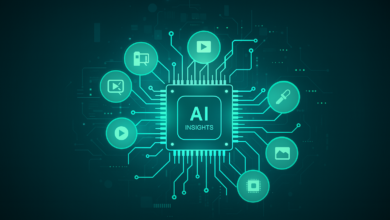Using AI to Predict Consumer Trends and Buying Behavior

In a hyper-competitive market, knowing what your customers want before they do is the ultimate advantage. Artificial Intelligence (AI) has made this not just possible, but increasingly accurate and scalable. By analyzing massive datasets in real time, AI enables businesses to anticipate consumer trends, forecast demand, and shape marketing strategies that align with customer behavior before it even happens.
Why Predicting Consumer Trends Matters
The Competitive Edge
Accurate trend forecasting allows brands to launch the right products at the right time, optimize inventory, and position themselves ahead of competitors.
Reducing Risk
When brands understand likely shifts in consumer behavior, they can allocate resources more effectively, avoiding overproduction or understocking.
Improving Customer Experience
Predictive insights help companies tailor messaging, offers, and product recommendations, creating a personalized shopping experience that drives loyalty.
How AI Predicts Consumer Trends
Big Data Processing
AI tools can process millions of data points from:
- Social media activity
- E-commerce purchase histories
- Search engine queries
- Online reviews and ratings
- Industry reports and economic indicators
Natural Language Processing (NLP)
NLP allows AI to analyze text from tweets, blog posts, or product reviews, identifying emerging themes, sentiment, and keywords before they become mainstream.
Machine Learning Models
Supervised and unsupervised learning algorithms detect patterns, seasonal shifts, and correlations between different variables, improving prediction accuracy over time.
Key AI Applications in Consumer Behavior Forecasting
Social Listening and Trend Detection
AI-powered social listening tools can detect spikes in brand mentions or new product-related hashtags, signaling early consumer interest.
Predictive Product Recommendations
E-commerce platforms use AI to forecast which products an individual is likely to purchase based on their browsing and buying history.
Demand Forecasting for Inventory Management
Retailers use AI to predict sales volumes for specific products, enabling leaner inventory strategies and reducing waste.
Real-World Examples
Fashion Industry
Brands like Zara and H&M analyze social media data and point-of-sale information to predict seasonal fashion trends, adjusting production accordingly.
Food and Beverage
AI models track dietary conversations online, enabling companies to capitalize on trends like plant-based diets or functional beverages before they peak.
Tech and Electronics
Consumer electronics companies use AI to forecast demand for new gadgets, adjusting marketing and production cycles for optimal launch timing.
Midpoint Insight: AI Meets Human Intuition
While AI can process and analyze data far beyond human capacity, the most successful brands blend machine intelligence with human creativity. AI might flag a sudden rise in discussions about a new fabric, but a human trend analyst can interpret cultural context and translate it into actionable brand strategy.
Some companies experiment with interactive AI platforms like Overchat, which allow marketing teams to “converse” with AI about market data, brainstorm campaign ideas, and explore scenario-based forecasts. This conversational layer transforms raw analytics into collaborative planning, making AI a true partner in decision-making.
Challenges in AI Trend Prediction
Data Quality and Bias
If input data is skewed or incomplete, AI predictions can be inaccurate. Brands must ensure diverse, representative datasets.
Overreliance on Automation
While AI offers powerful insights, relying solely on algorithms can miss cultural nuances or outlier trends driven by unique events.
Privacy Concerns
Collecting and processing consumer data must comply with regulations like GDPR and CCPA to maintain customer trust.
Expert Commentary: The Future of AI Trend Forecasting
Dr. Helen Armitage, a consumer behavior scientist, observes:
“The future of AI in market forecasting lies in hybrid systems—algorithms that process vast data sets in seconds, paired with human strategists who understand emotional drivers and cultural undercurrents.”
Her point reinforces the idea that AI should not replace human decision-making but enhance it with speed and scale.
Future Trends in AI Consumer Prediction
- Real-Time Micro-Trend Detection – AI will monitor live data streams to identify hyperlocal or niche trends as they emerge.
- Cross-Platform Behavioral Mapping – Tracking user behavior seamlessly across devices and platforms for a unified profile.
- Predictive Personalization – Moving beyond recommending current products to suggesting future purchases based on life stage or upcoming needs.
- Ethical Forecasting Models – Transparent AI systems that balance profit goals with consumer well-being.
Implementing AI Trend Prediction in Your Business
- Define Your Goals – Are you aiming to forecast seasonal demand, identify emerging trends, or personalize recommendations?
- Choose the Right Tools – Select AI platforms that specialize in your industry’s data sources.
- Integrate Human Oversight – Ensure a cross-functional team reviews AI predictions before acting.
- Measure and Adjust – Track the accuracy of predictions and refine your data models over time.
Conclusion: Predicting Tomorrow’s Market Today
AI’s ability to predict consumer trends and buying behavior has transformed from an experimental advantage to a core business necessity. Brands that embrace AI-driven insights can launch products with greater precision, reduce waste, and create deeply personalized customer experiences.
When paired with human intuition, AI becomes more than a predictive engine—it becomes a strategic partner, capable of guiding businesses through the fast-changing landscape of consumer demand with confidence and agility.





